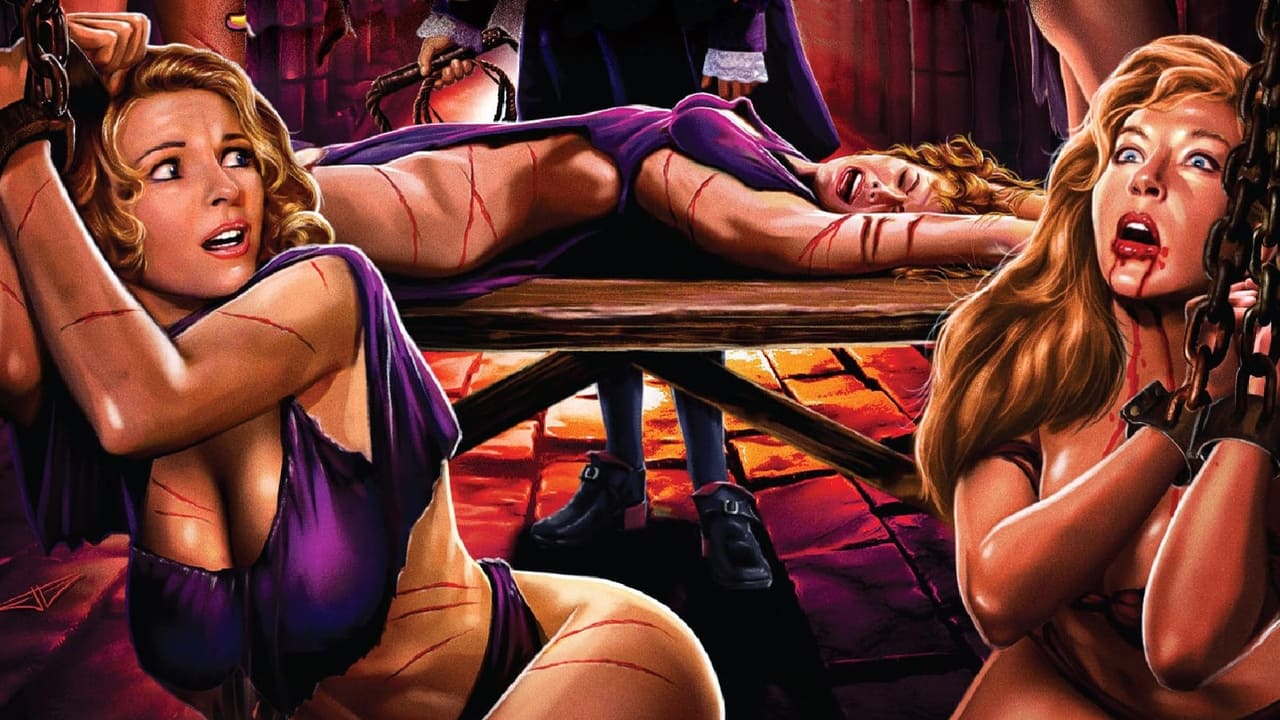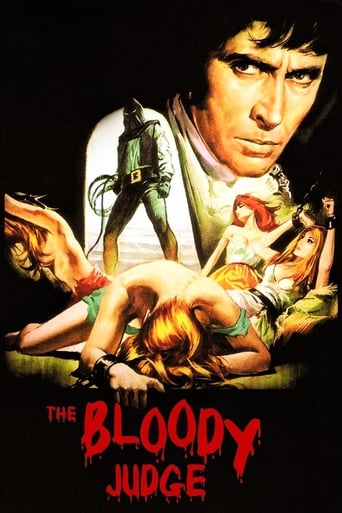

Christopher Lee plays Welsh Judge Jeffries (who was in fact a real judge back in the 17th Century in England) in this Jesus Franco directed horror-biography from 1970. He has known as "The Hanging Judge" and would convict with a heavy strike from his gavel. Lee does quite a fine job in the lead role and almost all on his own leans me toward recommending this one, but alas it is close, but no cigar on this one. As I mentioned earlier directed by the late Jesus Franco and over his career I would commend him on the amount of work he ended up directed and writing, even though at the time of writing this review I have seen 3 of his pictures and none of them I really liked or would recommend to anyone. This one was the best as his I have seen to date. The personal problem I had with this movie was at times (always happens when Lee was not on screen) I would get bored. It became too talky and not enough action for me. Although to me the 3rd act was the best and does pick up, but wasn't enough for me.
... View MoreDirected by Jess Franco and produced by Harry Alan Towers, the Bloody Judge is none other than Christopher Lee, playing Christopher Lee playing imperious Judge Jeffries. The beautiful Alicia Grey (Margaret Lee) is brought before him, a woman of such beauty there is more than a note of appreciation that threatens to ripple Jeffries powdered wig before he condemns her to death. She is, like many others, accused of witch-craft. Why at that very moment, slimy Jack Ketch (the excellent Howard Vernon) is torturing some other poor blood-drenched beauty on the rack.Said with some justification to be inspired by 1968's powerful 'The Witchfinder General,' this is an involved and involving story concerning Alicia's sister played by Franco favourite Maria Rohm, another to catch the keen gaze of Jeffries. She is courting Harry Selton (Hans Hass), who falls foul of many powerful people including the vengeful Satchel (Milo Quesada sporting some convincing scarred make-up). Selton's father, the very powerful Lord Wessex (Leo Genn) is one of few people who threaten Judge Jeffries' power.Jeffries' unflappable veneer is occasionally exposed as being more brittle than initially apparent, and Lee plays the insecurities very well, despite his character quite rightly being labelled 'devil' by Mary Grey, Maria Rohm's most impressive character. In this, Rohm comes across as Franco's own Veronica Carlson. Carlson often exuded a style and composure which often elevated her from the characters she played for Hammer films – here, Rohm does the same.
... View MoreThis is actually one of Jess Franco's better films; a relatively high budget goes a long way in creating some authentic locations and costumes in this historical drama. The film is also refreshingly free (well, not totally) of the pointless zoom shots of which Franco was so proud. The original title was NIGHT OF THE BLOOD MONSTER, but as there are no monsters involved, it seems to bear little relation to the film and THE BLOODY JUDGE is indeed far more apt. Christopher Lee plays the cruel judge who has blood on his hands as he finds all suspected witches guilty and sends them to be burnt alive.The film is very similar storyline to WITCHFINDER GENERAL, an obvious influence, as well as MARK OF THE DEVIL. The film has a lot going in its favour, but ultimately it fails to be a masterpiece due to the confusing editing and disjointed feel to the whole thing. While the threadbare plot is nothing new, it gives ample opportunity for Franco to delight in what he likes best: naked women, and plenty of torture scenes, including a woman being whipped and (the most wince-inducing) a bloodied woman stretched on the rack.Christopher Lee gives a tour-de-force performance in the title role and he's perfectly cast as the cruel, tyrannical lawman. His portrayal of the corrupt and seemingly powerful leader who is plagued by inner demons is an insightful one. Lee is surrounded by some top Euro crumpet, indeed Franco fills out the cast with lots of beautiful women who get variously tortured and murdered. Franco favourite Howard Vernon enjoys himself as an executioner.Those who enjoyed the aforementioned classic with Vincent Price will be sure to delight in this very similar film. Attention to detail is surprisingly thorough, and the costumes and sets are brilliant. Without the grisly torture sequences the film would be an interesting, engaging historical story of a barbaric time in Britain, but with them, it becomes an accurate portrayal of the violent and perverse state that the country was in. Worth seeing for Lee's memorable performance alone, this may not be a very good film, but it's definitely better than you might have come to expect from exploitation king Franco.
... View More"The Bloody Judge" is unquestionably one of Jess Franco's finest accomplishments, and there are several elements that contributed to this. First of all, Christopher Lee depicts another unforgettably mean-spirited and frightening horror protagonist. This doesn't always guarantee a great movie, mind you, as Franco and Lee previously collaborated to make a couple of sequels in the Fu Manchu series, and they were dreadfully boring films. The character of medieval witch hunter Judge Jeffries clearly suits Lee a whole lot better than the oddly mustached oriental master-criminal and his performance confirms this. Secondly, for one of the few times during his entire career, Jess Franco could actually rely on a decent budget! There was enough money for fancy costumes and atmospheric scenery, and even the editing and cinematography were clearly handled professionally. Finally, you can hardly go wrong with the subject matter of medieval witch-hunting, political corruptness, vile torture footage and robust executions. Although clearly inspired by the popularity of "Witchfinder General" (starring Vincent Price), "The Bloody Judge" contains more than enough own ideas and ingenuity to be considered as a success in its own right. The film opens with the extended and compelling trial of a young girl accused of witchcraft, leading to her relentless execution burning at the stake. The long opening adequately introduces the character of Judge Jeffries, but the actual plot only unfolds after this. The executed girl's sister flees up the country and falls in love with the son of an eminent politician, who also happens to rebel against the corrupt English crown. The obsessive Judge Jeffries orders his followers to capture all the rebels and submit them to torture, but the army of William of Orange is slowly approaching England to conquer the crown. The amounts of graphic violence and especially gratuitous sleaze are admirably kept rather low, and this in favor of character development and tension building. Naturally, there are a handful of brutal sequences on display (notably the "interrogation" of poor Alicia) but "The Bloody Judge" is mainly story & atmosphere-driven. Franco regular Howard Vernon (Dr. Orloff!) has a small but terrific role as the sneering executioner Ketch. Like another reviewer already stated, Vernon here strangely resembles Marty Feldman when he played Igor in "Young Frankenstein". Maria Rohm is enticing and beautiful as ever playing Mary or "that wench" as people insist on referring to her. "The Bloody Judge" is a good film that easily deserves a spot in my Jess Franco top five, alongside "The Diabolical Dr. Z", "The Awful Dr. Orloff", "Faceless" and "Love Letters of a Portuguese Nun".
... View More